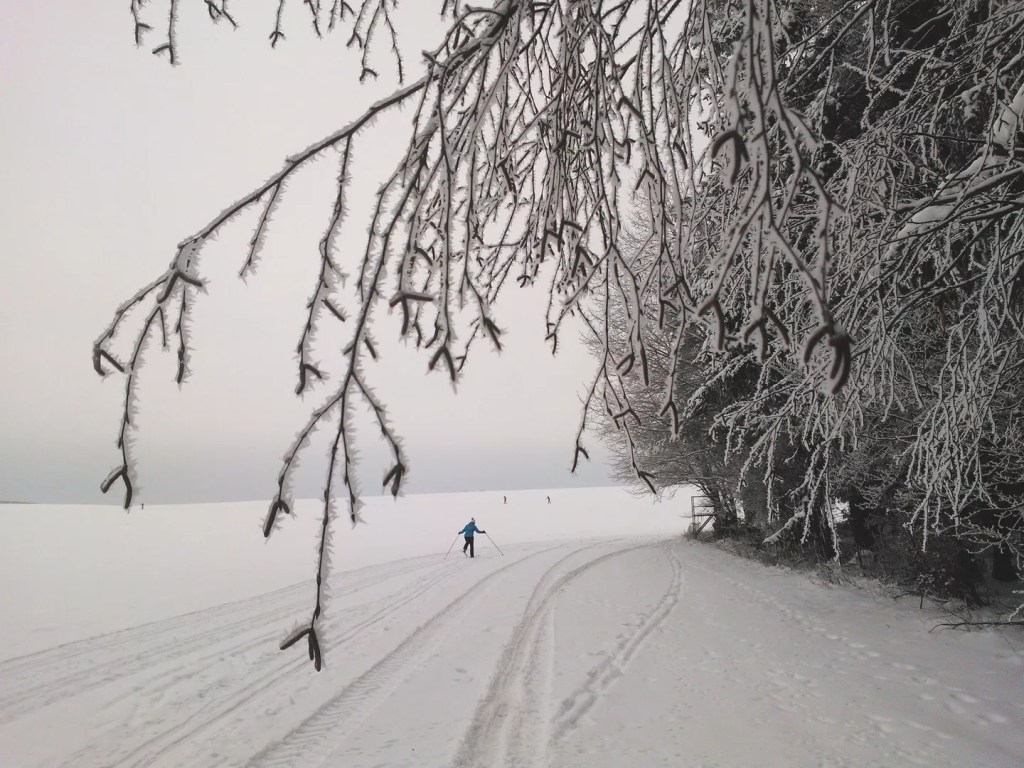According to new reports released by Tourism Economics, visitors spent $4.635 billion in the Hudson Valley and $2.296 billion in the Catskills in 2022, surpassing the previous high water mark of 2019. Combined, the two regions account for 27 percent of New York’s tourism income, second only to New York City. Our neighborhood captured a good-sized slice of the 291.5 million visitors to the state last year, and tourism leaders suspect that 2023 may turn out to be yet another record breaker.
Come what may, we’re always going to be the metro-adjacent playground where there’s plentiful access to nature and room to breathe, a factor in the onetime flourishing of the Borscht Belt, a saving grace for our post-industrial local economies, and a driver of steady migration, marked by the occasional tidal wave, for generations. Even in the throes of the pandemic, with most small businesses shut down, the real estate market overheated and downstaters flocked north to hiking and biking spots.
But trails alone, vital as they are, don’t keep the tourism train on track. In 2020, Hudson Valley visitor spending dropped by nearly half, and the Catskills took in about $400 million less than the year before. By 2021, though, the Catskills were already beating their 2019 record and the Hudson Valley was showing strong signs of recovery—and 2022 was off the charts.
“Our overall growth is right in line with the state,” says Lucy Redzeposki, Rockland County’s Director of Economic Development and Tourism and current President of Hudson Valley Tourism. “And in the past three years we’ve had an increasing focus on international tourism. Many of the repeat travelers to New York City are asking for experiences outside of the city, and certainly the Hudson Valley is the perfect place.”

Many visitors, Redzeposki says, are looking for fresh-air adventures. “Interest in outdoor activities exploded during COVID, and now it’s beyond hiking and biking,” she says. “It’s anything with an outdoor component—dining, fairs, festivals, markets. There’s the risk of getting rained out, but these things are just an enormous draw. And we’re finding that people are spending more time here and moving around the valley more, which is great. We keep hearing, ‘So what else can I do here?’ and there are so many great answers.” Along with the outdoor fun, Redzeposki cites destination weddings as a sector that’s boomed and is likely to continue growing, with the ample possibilities for a full weekend’s worth of amusement.
“There’s continued investment in the Hudson Valley, and a lot of places aren’t like that,” says Melaine Rottkamp, President and CEO of Dutchess Tourism. “Even during the pandemic, although some places did close permanently, so many new ones were opening.” Tourism spending in Dutchess County increased by 4.7 percent over the 2019 record, with the majority of the money coming from food and beverage ($210 million) and lodging ($196 million).

Rottkamp agrees that international visitors are becoming an ever-bigger part of the picture. “Canadian travelers are our biggest international customers thanks to our shared border,” she says. But their organization is aiming to reach an even broader market of travelers. “Dutchess Tourism aggressively markets the county and the region in the UK, Ireland, Germany, Austria, Switzerland, and Australia,” she says. This month, Rottkamp and a fellow ambassador are headed over to the Brand USA Travel Week in London to promote Dutchess County.
Global marketing is a strategy being implemented throughout the Hudson Valley and Catskills, at the county and regional levels and in coordination with the state and I LOVE NY. A string of high-end media mentions— Conde Nast, Travel & Leisure, Vogue, and National Geographic, to name just a few—has helped raise the region’s profile as a destination for luxurious lodging and top-notch cuisine both nationally and internationally. So has the growth of the region’s film industry, which broadcasts our scenery while sparking a steady stream of celebrity sightings.
Tourism directors are riding the wave, enjoying the scope and excellence of what they have to offer. “People ask me what kind of travelers we get—individuals, couples, families, older, younger—and the answer is: everyone,” says Redzeposki. “Someone that is looking for a very high-end experience where you’re going to be paying $2,000 a night to be pampered, or someone that is just coming up on their bike, stopping at a local pizza restaurant—they can both have a wonderful time.”
State investments in trail networks and accessible travel have helped some, and there’s always the train, but it’s still tough for car-free travelers to delve too deep. Rottkamp cites the city of Beacon’s partnership with Dutchess County on free loop service between the train and Main Street as a best practice. (Uber and Lyft both operate here, but Lonely Planet cites a lack of drivers and spotty cell service as challenges.) But even off the beaten path, people are finding ways to get here and get around—and loving what they find.
“We saw an 18.6-percent increase over 2019; our overall traveler spending rose to $892 million in 2022, which is phenomenal for our little Catskills destination,” says Roberta Byron-Lockwood, president and CEO of the Sullivan Catskills Visitors Association. (She was recently named Outstanding Tourism Executive of the Year by the New York State Hospitality & Tourism Association.) “Most places in the region, a typical household saves around $1,000 in taxes thanks to tourism income; here in the Sullivan Cats it’s $3,370 more that they’d have to pay to maintain the same municipal and county services. This great tapestry of incredible businesses that make up the Sullivan Catskills hospitality industry truly does have a positive effect on the residents and lifestyles of everybody that lives here.”
Once the heart of the Catskills Borscht Belt, Sullivan County—home to 164 lakes, very little public transport, and not one city—has benefitted from fresh investment since the 2006 opening of Bethel Woods Center for the Arts at the site of the Woodstock festival, prioritizing sustainability, collaboration, and practiced local wisdom. The luxurious reinvention of the 53-year-old Eldred Preserve, for example, taps the wisdom of hoteliers who’ve been running their Bradstan Country Hotel in Bethel for three decades and restaurateurs from the family that had a 63-year run with the Homestead in Monticello. Foster Supply Company, which has five boutique Sullivan properties, including The DeBruce and The Arnold House, and is opening a sixth imminently, was founded by a Sullivan County guy and a Westchester-raised gal who met while fly fishing.

Like her fellow tourism pros, Byron-Lockwood cites the incredible range and quality of offerings as the biggest reason things are going so well. “So many new properties have opened. We have glamping and bungalows and Resorts World Catskills with their casino and Monster Golf Club opening up. Holiday Mountain Ski & Fun Park was purchased by a local owner with a huge love of the mountain and he’s pouring money into it, adding new trails and restoring lost ones, adding snowmaking. Our walkable, gorgeous hamlets and towns are full of artisans and makers. We have chefs getting recognized by James Beard and Michelin, and a ton of new and emerging properties, each exciting in its own way. And where else on the planet can you visit the original Woodstock festival site? Only here.”
Direct tourism-generated labor income accounted for $1.5 billion in the Hudson Valley and $511 million in the Catskills, supporting a region-wide total of 51,241 jobs. SUNY Sullivan has grown its Catskill Hospitality Institute with a new course, Creating and Activating Public Spaces, that focuses on relationship-building and next-level customer service. Dutchess Tourism is offering the Certified Tourism Ambassador Program, a stand-alone professional certification open to county residents and those who work in hospitality there. The program has over 300 graduates from about 100 different businesses. “The goal is to make every visitor’s experience a positive one,” says Rottkamp. “The skills involved in that can enhance a hospitality career path—there’s plenty of room for people to advance if they show up and do the work—or if you decide that’s not for you, those same skills apply in any number of industries.”
Not every location is built to take on a massive influx of humans; part of the job of a Hudson Valley or Catskills tourism pro is to help take some pressure off overcrowded or fragile ones. “Everyone knows about Mohonk and Minnewaska and the Walkway,” says Lisa Berger, Ulster County Director of Tourism and Office of Film. “It’s our job to make sure they know about all the other choices, the undiscovered things. We work with the state authorities, the DEP and DEC, to calm the traffic at places that are overwhelmed. And hopefully we get people invested in loving the places they go, so they’ll leave no trace—these aren’t places with regular paid cleanup crews. But the variety makes it easier. Tell people about the Widow Jane and they’re stunned— music and performance art in an old mine? Where else do you find that?”
Tourism has seen steady growth in this neighborhood throughout the 21st century; interrupted for two years by the Great Recession and for about the same by the pandemic. Absent future developments of similar magnitude, it seems likely to continue, making the type of mitigation Berger describes ever more important. This, alongside making sure that the dollars generated benefit local communities and keep life—and the area’s beauty—affordable for those who already live here. For better or worse, we’re all ambassadors as we go about our daily lives—and we’re apparently doing a pretty good job of it. “We’re people that enjoy our own backyard,” says Putnam County Tourism Director Tracey Walsh. “We’re happy to share it with our visitors, and I think they feel that.”

















Very well researched and written article. Lots of revenue dollars, coverage is well spread throughout the region and article talked with a lot of the key people in the HV tourism industry.
Great drill down into the information and trends. Thank you.